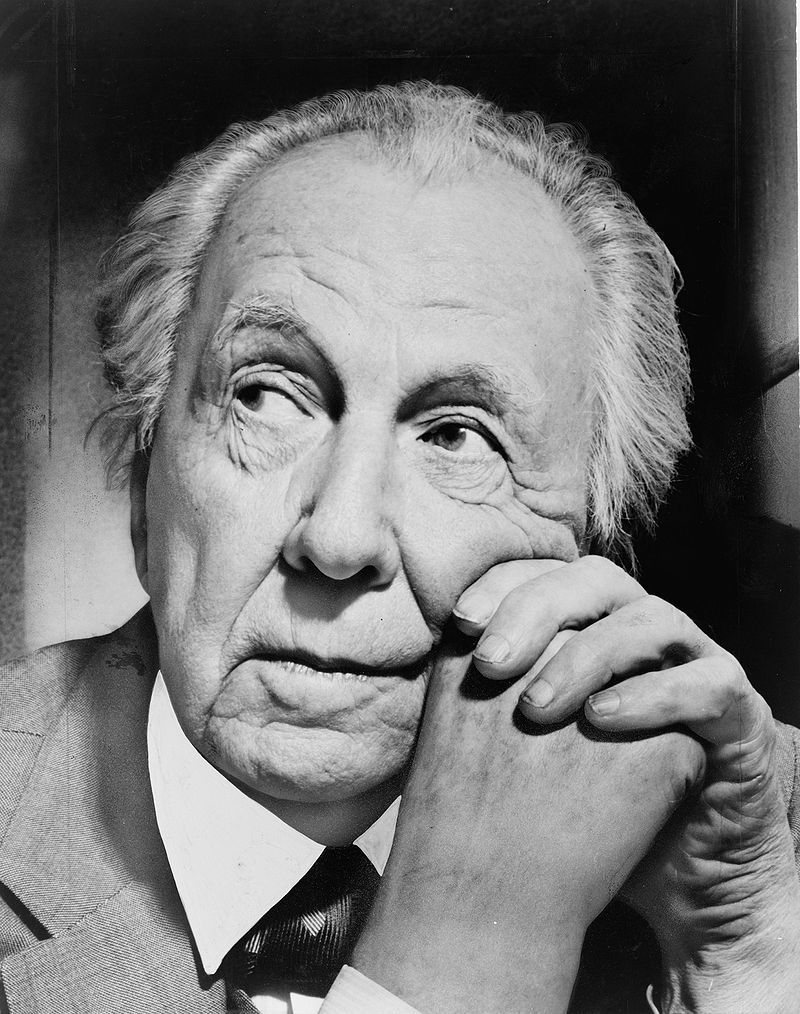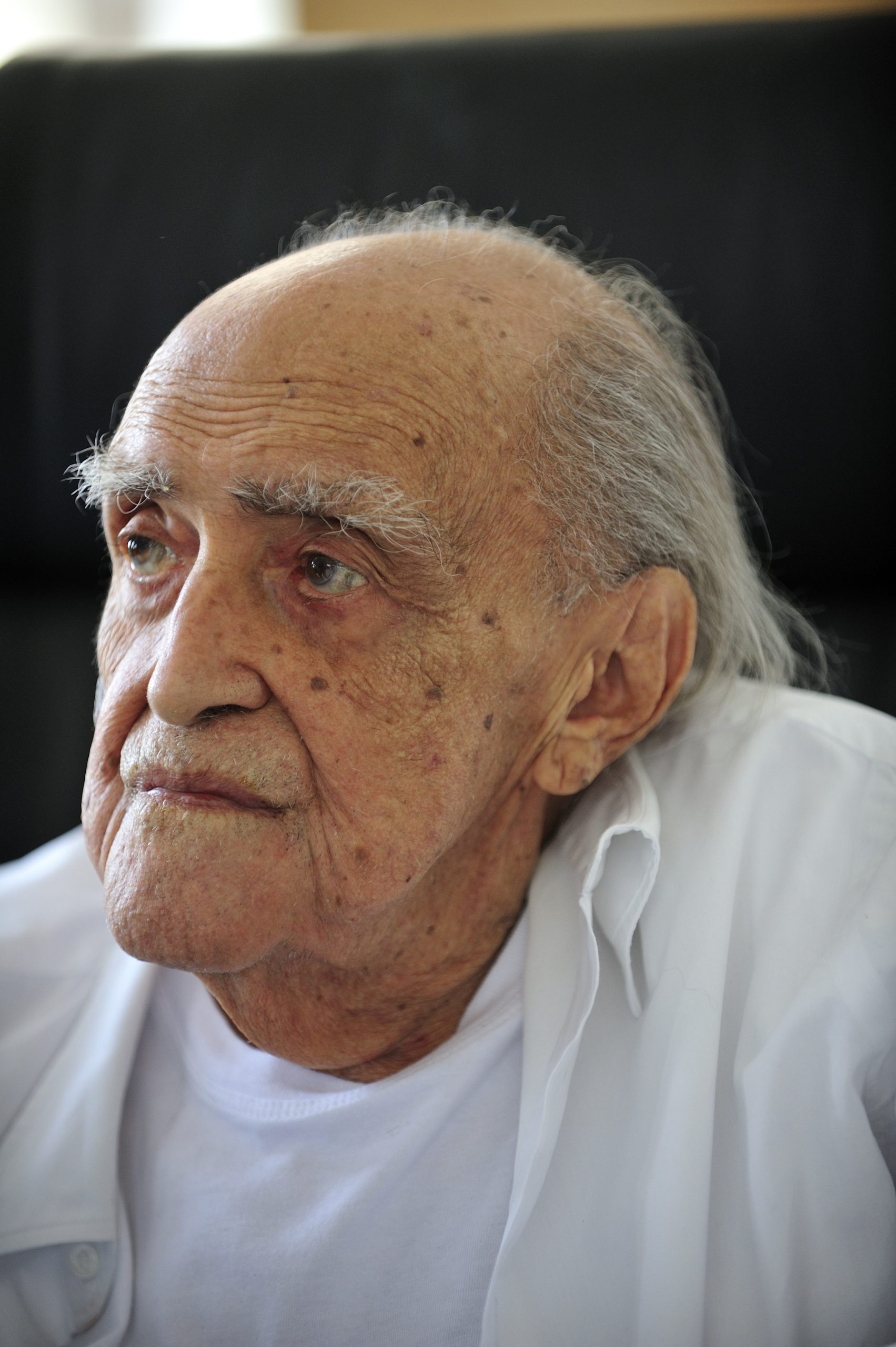architects
Frank Lloyd Wright

On this date in 1867, Frank Lloyd Wright was born in Wisconsin, where he was raised with Unitarian and Transcendentalist beliefs, and as an admirer of all things Welsh by his mother, Anna Lloyd Jones. Wright spent time on his uncles’ farm near beautiful Spring Green and enrolled at 15 at the University of Wisconsin. He left the university for a job at a Chicago architectural firm, soon founding his own firm. He built 25 “Prairie style” homes and structures at Oak Park, Illinois, from 1889-1913.
His controversial personal reputation began in 1909 when he left his first wife and six children to run off with the wife of a client, Mamah Borthwick Cheney. Wright built Taliesin (Welsh for “shining brow”) for her in Spring Green, and they lived there for two years. In 1914, a crazed servant from Barbados set fire to Taliesin, and stood by the exit door with an ax, where he hacked to death Mamah, her two children and four neighbors. The grief-stricken Wright built Taliesen II, which also became the apparent target of arson, then rebuilt Taliesen a third and final time.
His many famous structures include the Imperial Hotel, Tokyo; The Guggenheim Museum, New York; Taliesen West, his Arizona winter headquarters; the Marin County Civic Center; Price Tower; the Monona Terrace Convention Center, Madison, Wis. (built more than a half-century after it was first designed), and a series of lower-priced residential homes in the “Usonian” style, which he promoted during the Depression. Wright’s “organic architecture” was a major influence on American architecture, including its low-pitched roofs, extended lines and open living spaces.
His very first work was Unity Chapel, a lovely, secular-looking building with simple lines, found in Spring Green. He buried Mamah there and was buried there himself, with a Unitarian minister reading from Emerson: “Who so would be a man would be a nonconformist.” Wright had a pantheist-like reverence for nature. “Ugliness” was his idea of “sin,” he told a reporter in 1955. He joined the First Unitarian Society in Madison, Wis., after designing its famous building in 1947-1950. D. 1959.
“I prefer to say that nature is the only body of God that we shall ever see.”
— "Truth Against the World: Frank Lloyd Wright speaks for an organic architecture," ed. Patrick J. Meehan (1987)
Harry Weese

On this date in 1915, American architect Harry Mohr Weese was born in Evanston, Ill. While studying architecture at the Massachusetts Institute of Technology and Yale University, Weese toured Northern Europe, gaining an appreciation for functional, inexpensive modernist architecture and a disdain for the lavish historical revivals in pre-war architecture. After graduating from MIT in 1938, Weese began a fellowship in city planning at the Cranbrook Academy of Art in Bloomfield Hills, Mich.
Weese studied city planning, pottery and textiles alongside other Modernist designers such as Ralph Rapson, Charles Eames and Florence Knoll. After graduating from Cranbrook in 1940, Weese and classmate Benjamin Baldwin started their own architectural firm in Chicago. Soon after, Weese enlisted in the United States Navy as an engineering officer, returning to Chicago in 1945 after the conclusion of World War II.
The Art Institute of Chicago notes that “throughout his career, Weese was an outspoken advocate for architecture and planning that embraced the social, political, and economic realities of contemporary urban life.” Weese’s most notable buildings and designs include the Washington, D.C., metro system, the American Embassy in Ghana, the Time-Life Building in Chicago and the Humanities Building and Chazen Museum of Art at the University of Wisconsin-Madison, where FFRF is headquartered.
Weese has also designed over 80 single-family homes and residential buildings around North America and led numerous restoration projects, including Chicago’s Orchestra Hall and Union Station in Washington.
He married Kate “Kitty” Baldwin, the sister of his professional partner, in 1945. They had had four daughters, Sheila, Shirley, Marcia and Kate. Sheila, the eldest, was born with Down syndrome and was institutionalized very early. Weese’s last years were marred by severe alcohol addiction and a series of strokes. (D. 1998)
"My father was Episcopalian, my mother Presbyterian, and I'm an architect."
— Weese, while being interviewed by the building committee of the Seventeenth Church of Christ, Scientist in Chicago, (WBEZ, Oct. 22, 2014)
Oscar Niemeyer

On this date in 1907, architect Oscar Niemeyer was born in Rio de Janeiro, Brazil. He was an artist and highly accomplished architect who designed the majority of the public buildings in Brasília, Brazil’s capital, in the 1950s. His works include Itamaraty Palace in Brasília (constructed in 1962), the Cathedral of Brasília (1970) and the Museum of Contemporary Art in Niterói (1996). He is often called Brazil’s greatest architect for his innovative modernist architecture. Active in politics as a socialist, he was forced into exile in France in 1964 when the military seized power in Brazil.
He was very public about his atheism but accepting of people with religious beliefs and designed churches and at least one mosque. “[I]n the end, that’s it — you are born, you die, that’s it.” (“Oscar Niemeyer: A Vida é um Sopro,” a 2007 documentary film)
In 1988 he was awarded the Pritzker Architecture Prize along with Gordon Bunshaft, making Niemeyer the first and only South American to be awarded the Pritzker. In 2007 he published his memoir The Curves of Time. Niemeyer was married to Annita Baldo from 1928 until her death in 2004, and they had a daughter, Ana Maria. He married Vera Lúcia Cabreira, his longtime secretary, in 2007 when he was 98. They lived in a house he designed in 1951. He died at age 104. Samba music played at his interment. (D. 2012)
"A church is something very beautiful. It is nice when people feel happy in it. But I am not a religious man. Look at us, and then at the infinity of space. We are rather small, insignificant creatures, wouldn't you say?"
— Niemeyer, quoted in "Oscar Niemeyer: Legend of Modernism," eds. Paul Andreas and Ingeborg Flagge (1999)
